December 25, 2020
2287
The first is the basic principles, because many basic principles have been summarized above, so this position is relatively rough.
1. Basic principles
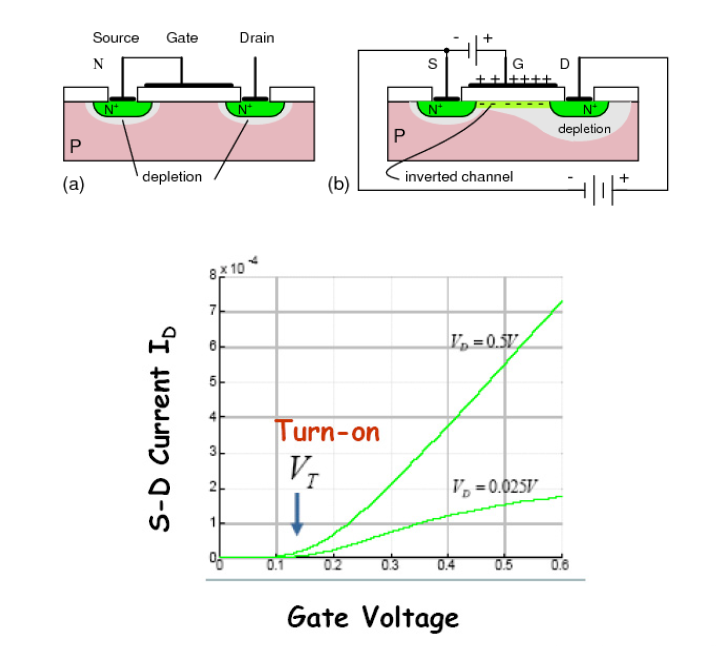
As can be seen from the figure, Vt is the turn-on voltage. For N-channel cmos, when the gate voltage gradually increases, most carriers are attracted by the gate and move upward to form an N-channel. The N-type semiconductor is turned on and there is a conduction current. The voltage applied to the gate that starts to conduct current is called the turn-on voltage. As the turn-on voltage increases, the current gradually increases. This is the basic principle of cmos tube.
Transition from cmos tube to nandflash:
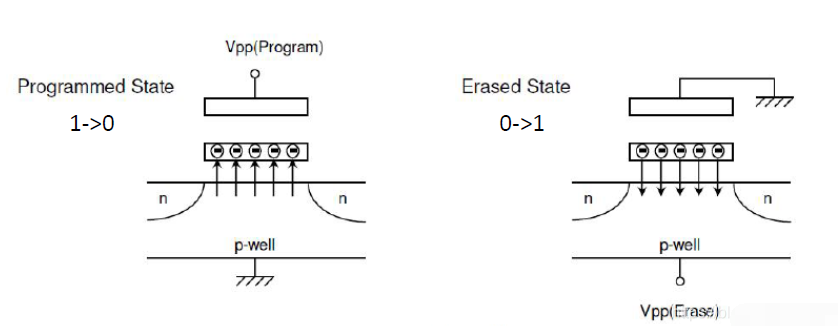
Unlike cmos, a floating gate is added near the gate, and the floating gate is covered with oxide layers on both sides.
When writing, by adding a sufficiently large gate voltage, electrons can be driven into the floating gate through the tunneling effect of the oxide layer to complete the process of writing 0;
When erasing, the reverse voltage is applied and the tunneling effect is used to let electrons come out of the oxide layer to complete the erasing function.
When reading, because there are electrons in the floating gate, there will be a reverse electric field, which will cause the turn-on voltage to increase. When reading, it depends on this feature to add a voltage greater than the turn-on voltage to the gate, then the channel If it is turned on, there will be a conduction current, and it can be analyzed whether it is 0 through the conduction current.
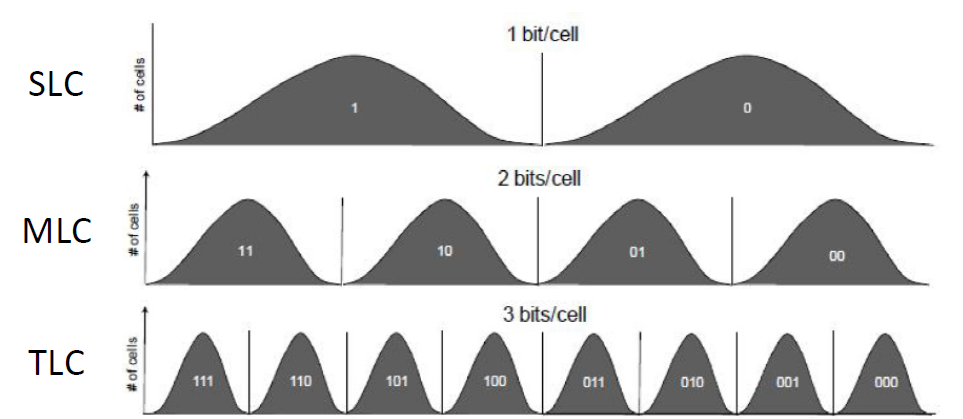
It can be seen from this figure that taking mlc as an example, how to read the data of mlc is also in accordance with the previous method of detecting voltage, through the step of detecting voltage, detecting three thresholds, if there is a current detected under the detecting voltage , It means what kind of data value it is, which is the principle of multi-bit read operation of the cell.
Comparison of three ways of reading, writing and erasing and PE:
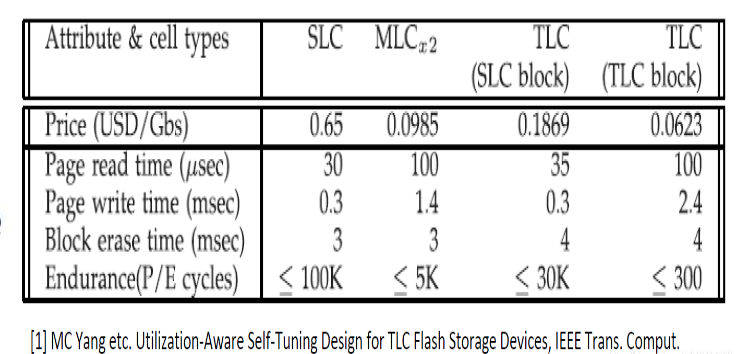
It can be seen from this figure that tlc is mainly slow to write, but has a large storage density; slc is slow to read and write, but has low density.
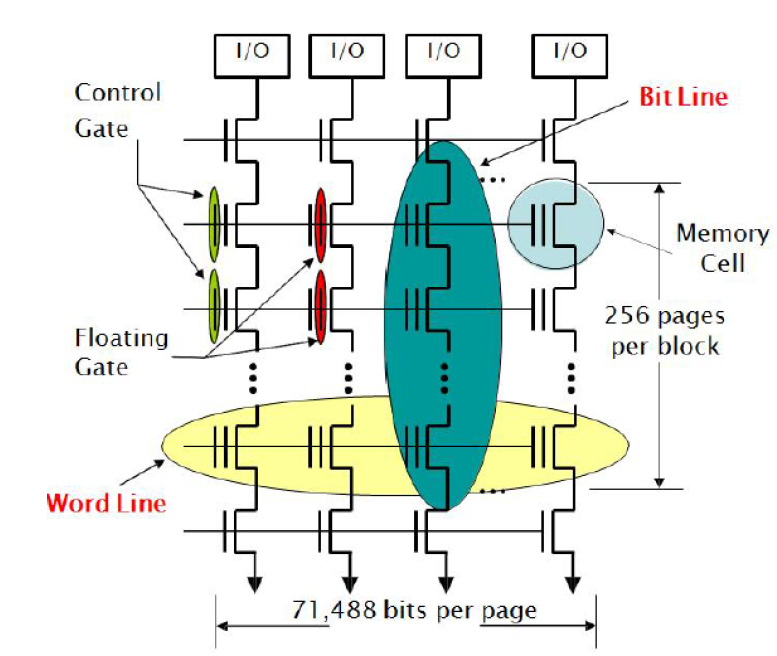
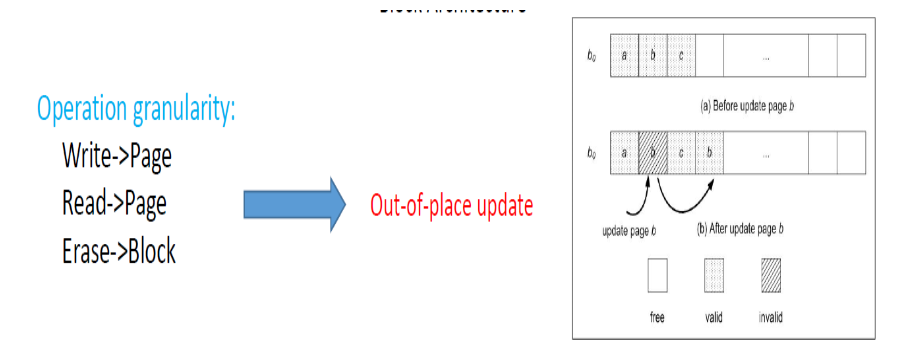
It can be seen from this picture that the worst point of nandflash is out-of-place update.
What is remote update? ?
That is, when we want to update the data of a certain page, we cannot directly write like this page, because this page is not a blank page, it has been written, at this time we can only copy this page to other blank pages, and then It is very inconvenient to test this block and then write it, because when there is data update and write, it needs to be copied, erased, and written again.